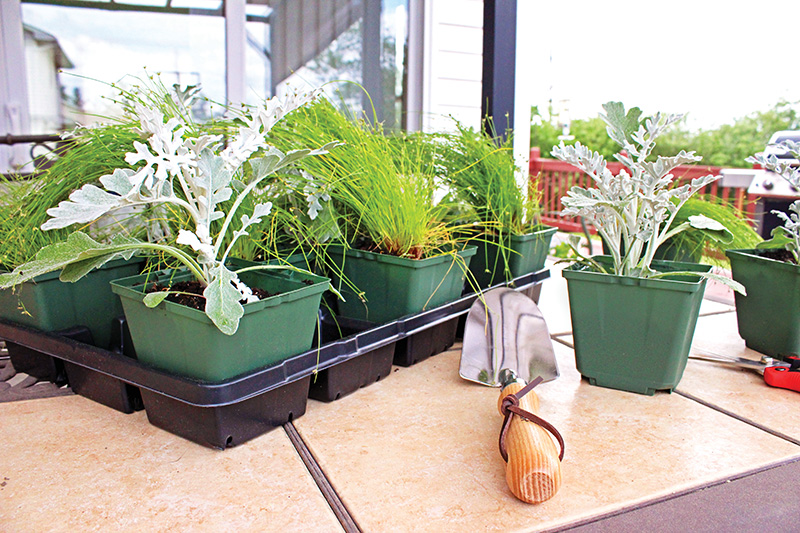Nursery Pots: Nurturing Growth Through Time

Nursery pots, those humble containers that house young plants and seedlings, play an essential role in the world of gardening and agriculture. They provide a nurturing environment where plants can establish their roots and grow before being transplanted into larger spaces or gardens. In this blog, we will explore the purpose and history of nursery pots, shedding light on their significance in horticulture and agriculture.
Nursery pots serve several crucial purposes in the world of plant cultivation:
- Seedling Development: Nursery pots offer a protected space for seedlings to germinate and grow into robust plants. This controlled environment shields them from harsh weather conditions, pests, and competition from weeds.
- Root Establishment: The design of nursery pots promotes healthy root development. As the plant grows, its roots fill the pot, creating a well-formed root system. This is particularly vital for ensuring a strong foundation when transplanting.
- Transplantation Ease: One of the primary purposes of nursery pots is to simplify the process of transplanting. Once the young plants have reached an appropriate size, they can be easily moved to larger containers or directly into the ground with minimal root disturbance.
- Controlled Growth: Nursery pots allow gardeners and growers to maintain better control over the growth conditions. They can adjust factors like soil composition, watering, and nutrient levels more precisely to foster healthy plant development.
- Plant Variety Maintenance: In horticulture and agriculture, maintaining the characteristics of specific plant varieties is crucial. Nursery pots help ensure that new plants remain true to their parent plants, preserving desirable traits.
The use of containers for plant cultivation dates back thousands of years, but the concept of the modern nursery pot has a more recent history:
Ancient civilizations, such as the Egyptians and Mesopotamians, were among the first to use containers for plant cultivation. They used reed baskets and clay pots to transport and grow plants. These early containers served the practical purpose of making agriculture more manageable and mobile.
The Terracotta Era
The ancient Greeks and Romans further developed the concept of container gardening, using terracotta pots for various plants. The Romans, in particular, are known for their widespread use of containers for both ornamental and edible plants.
The Transition to Modern Nursery Pots
The modern nursery pot, typically made of plastic, emerged in the mid-20th century as a response to the increasing demand for efficient and cost-effective methods of plant propagation. Plastic offered durability, affordability, and versatility, making it an ideal material for mass production.
Innovation in Design
Over the years, nursery pots have undergone various design improvements. Drainage holes were introduced to address issues of waterlogging, and various sizes and shapes became available to accommodate different plant types. Additionally, biodegradable and eco-friendly options have gained popularity as sustainability and environmental concerns have become more prominent.
Nursery Pots in Contemporary Gardening
Today, nursery pots are universal in both commercial agriculture and home gardening. They come in a range of sizes, from small cells for seedlings to larger containers for more established plants. These pots have found their place in various horticultural practices, including:
- Greenhouse and Nursery Operations: Commercial growers rely heavily on nursery pots for starting and propagating plants in controlled environments like greenhouses. The pots allow for efficient management of space and resources.
- Home Gardening: Nursery pots are a staple for home gardeners, offering an accessible way to grow plants from seeds or small cuttings. They are particularly useful for gardeners with limited space or those who want to extend their growing seasons.
- Urban Gardening: In urban environments, where space is at a premium, nursery pots offer a convenient solution for rooftop gardens, balconies, and community gardens.
- Landscaping: Landscapers use nursery pots to cultivate plants before incorporating them into larger landscaping projects. This approach ensures that plants are healthy and well-established when they are placed in their final locations.
Nursery pots are unassuming but essential tools in the world of plant cultivation. They provide a nurturing environment for young plants, promoting healthy root development and controlled growth. The history of nursery pots reflects our ongoing quest for efficient and practical solutions in agriculture and horticulture, from ancient civilizations to modern times.
As we continue to refine the design and materials of nursery pots, their importance in sustaining our green spaces and gardens remains unwavering. Whether you’re a seasoned gardener or just starting your journey, nursery pots are a fundamental part of your toolkit, helping you bring life to your plants and beauty to your surroundings.
Find Your Perfect Planter!
The HC Companies offers a wide variety of greenhouse, nursery, cannabis, sustainable, and retail planters and pots. Find the one that's right for your growing operation today!
Browse Products

 Find the Perfect Planter
Find the Perfect Planter